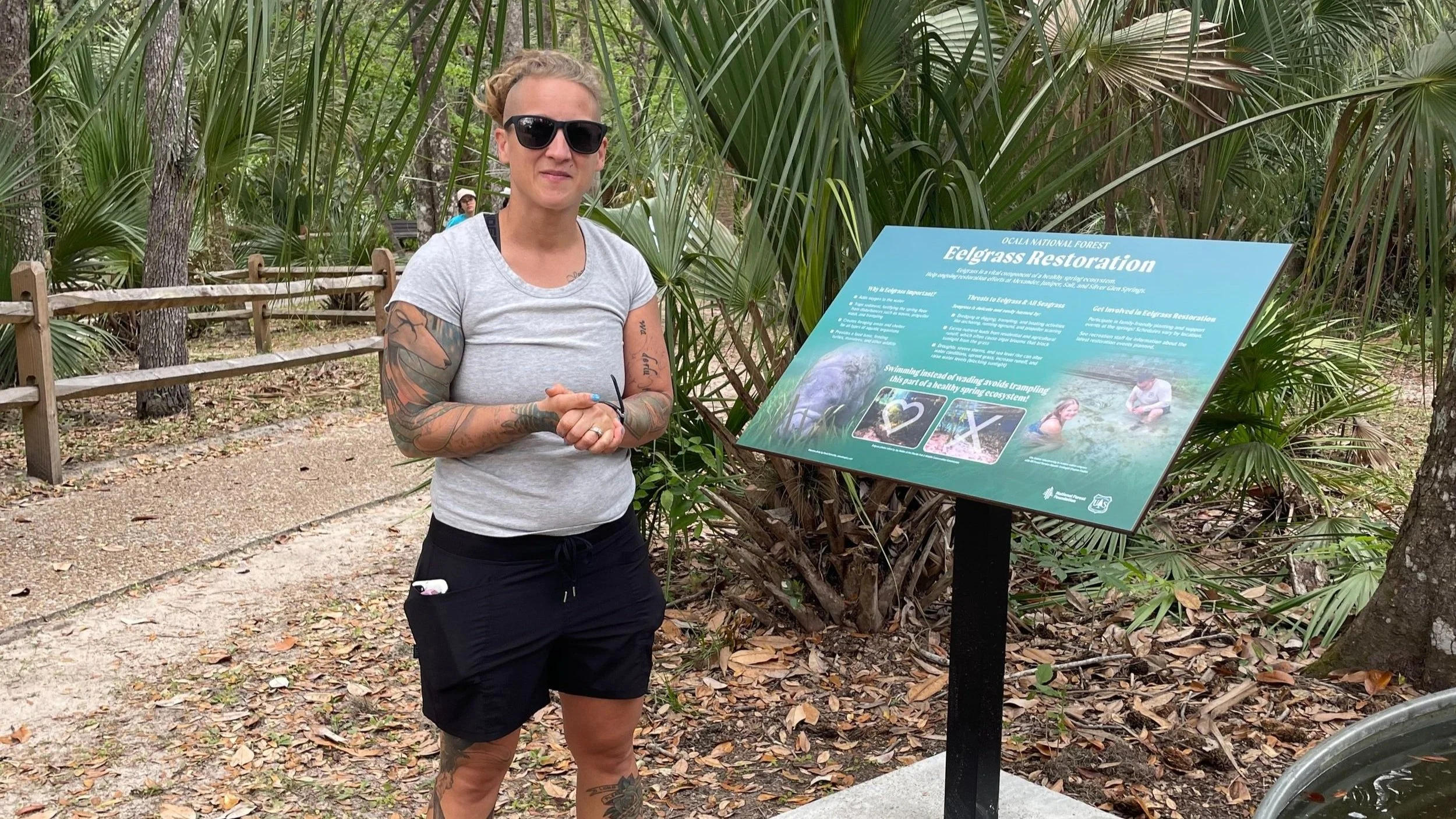
Why Eelgrass Matters: Supporting Spring Health at Alexander and Juniper Springs
OCALA NATIONAL FOREST
Crystal-clear water and sandy bottoms are often what come to mind when people picture Florida’s springs—but that’s not the only sign of a thriving ecosystem. In fact, the presence of native aquatic vegetation like eelgrass is one of the strongest indicators of spring health.
Eelgrass plays a vital role in the spring environment. It provides shelter and food for fish, turtles, and even manatees. It helps stabilize sediment, reduces turbidity, and absorbs excess nutrients—contributing to clearer water and a more balanced ecosystem. While some visitors may think areas with more vegetation look murky or unclean, the presence of healthy eelgrass is actually a sign that the spring is functioning well and supporting diverse aquatic life.
To help restore this essential plant, the U.S. Forest Service is leading a conservation effort that includes on-site eelgrass propagation at Alexander and Juniper Springs. Tanks near the recreation areas are used to grow young eelgrass in a protected setting before it's reintroduced into the spring runs—strengthening the ecosystem from the ground up.
This work is a reminder that nature’s healthiest expressions aren’t always the most manicured. Eelgrass is part of what makes these places special—and preserving it helps ensure the springs remain vibrant for generations to come.
Visit the Springs and See the Effort in Action
These restoration efforts are taking place at two beloved sites in the Ocala National Forest:
Alexander Springs Recreation Area – Known for its wide, shallow spring run and family-friendly swimming, Alexander Springs is one of the few first-magnitude springs where scuba diving is allowed.
Juniper Springs Recreation Area – One of the oldest and most iconic recreation sites in the national forest system, Juniper Springs features lush subtropical scenery, a historic mill house, and access to the world-renowned Juniper Run.
As this effort continues to grow, additional eelgrass propagation tanks may be introduced at other spring locations as well. The program is already proving to be a valuable teaching tool and is expected to become a key feature of our Educational Programs in the seasons ahead.

